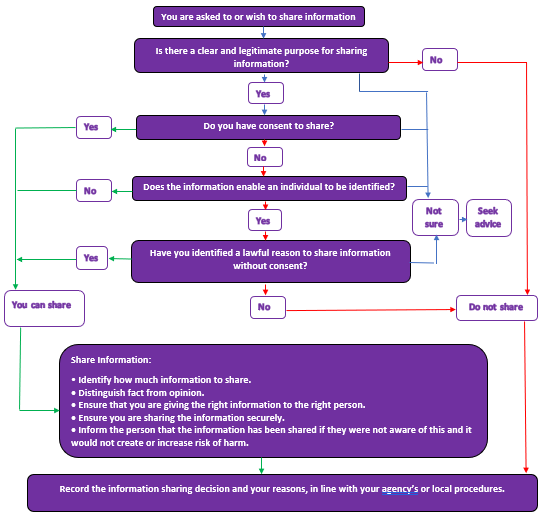Human Rights Act 1998
Articles 2 and 3 of the Human Rights Act 1998 place an obligation on public authorities to protect people's rights to life and their freedom from torture, inhumane and degrading treatment. Meeting these obligations may necessitate lawful information sharing.
The Data Protection Act 2018
The Data Protection Act 2018 is the UK's implementation of the General Data Protection Regulation (GDPR).
Everyone responsible for using personal data has to follow strict rules called 'data protection principles'. They must make sure the information is:
- used fairly, lawfully and transparently
- used for specified, explicit purposes
- used in a way that is adequate, relevant and limited to only what is necessary
- accurate and , where necessary, kept up to date
- kept for no longer than is necessary
- handled in a way that ensures appropriate security, including protection against unlawful or unauthorised processing, access, loss, destruction or damage
There is stronger legal protection for more sensitive information such as race, ethnic background, political opinions, religious beliefs, trade union membership, genetics, biometrics, health, sex life or orientation.
General Data Protection Regulation (GDPR)
This was designed to respond to technological and societal changes over the last 20 years. It is designed to strengthen the protection of personal information and extend the rights and controls individuals have over their data.


